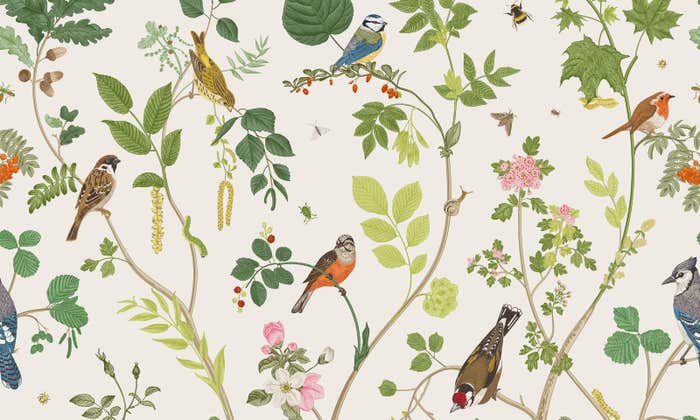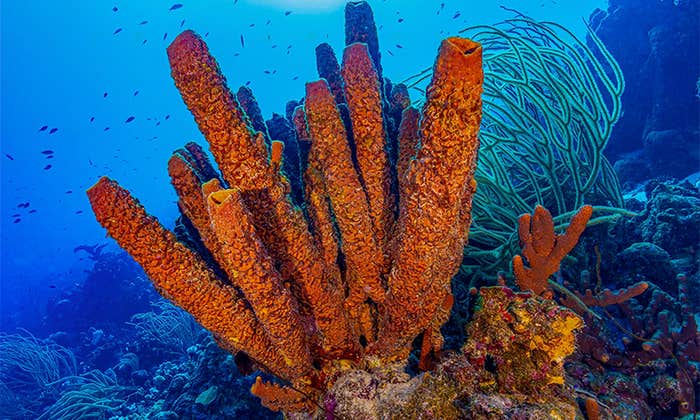
Recent fossilized bone discoveries in China and Israel support the exciting possibility of new, previously unknown species of archaic humans that wandered the planet alongside Homo sapiens. These discoveries pose new questions regarding the nature of our interaction with other archaic human species.
Todd Disotell, a biological anthropologist and molecular primatologist at the University of Massachusetts Amherst, has headed research on primate genome sequencing, which at first concluded Homo sapiens didn’t interbreed with other species of early humans. But his and other scientists’ subsequent research has now reversed this conclusion, revealing that in fact hominins, or early humans, such as Homo sapiens, Neanderthals, Denisovans (first identified in Siberia in 2010), did interbreed. The evolution of humans is now best pictured not as a simple tree with branches but, Disotell says, borrowing the priceless term from Monty Python and the Holy Grail, “shrubbery.
I like to joke that the Middle Pleistocene was a lot like Middle Earth where you had Dwarves and Elves and Orcs.
I spoke with Disotell, a member of the Center for the Study of Human Origin group at New York University, about the truths of human evolution hiding in our genome. At his family summer home in western New York, under the summer sun, he casually revealed five surprises regarding our evolutionary history. His insights include recurring facts about introgressions—the transfer of genetic material from one species to another—that have upended the simple family tree of our evolution. My interview is presented under six headings and entirely in Disotell’s words.
Our Viral Origin
About 10 percent of our genome has a viral origin. Some of these viruses are ancient. They go all the way back to vertebrates. Some are more recent. Most of them were originally retroviruses, which insert themselves into the genome, much like HIV. But, over time, mutations occur and now they’re just woven into our DNA. If mutations occur in key regions of the viral DNA, it can make the viral DNA inactive so it can’t re-infect. We call those endogenous retroviruses. Some of them have become reactivated in the sense that certain proteins can be produced, not as a viral particle but as a protein. Some of these are quite important. One is associated with placental development. It allows the placenta to basically invade the uterus. That goes all the way back to the origin of placental mammals. Now it’s basically universally used in mammals.
This viral DNA complicates the tree of life because some viruses can pick up strands of DNA from other organisms. Then, when they infect other organisms, their descendants will have snippets of DNA from another branch of the tree of life. That’s pretty cool. You’ve brought branches of the tree of life together in a single organism. If you look at the branches of life, it’s not one clean tree. Instead of a bifurcating tree, I refer to human evolution as being more like a bush. A short, chubby bush with many branches—a “shrubbery,” to get Pythonesque.
Our Interbreeding Ancestors
In the last few hundred thousand years, multiple species of hominins existed and interbred with each other. In fact, I use this as a teachable moment in my classes to show that scientists can be wrong. I was wrong! Right before we discovered this, I wrote a series of papers that indicated there was no interbreeding. That was the basis of the Out of Africa model, that Homo sapiens replaced earlier hominids. All that data was from mitochondrial DNA. We didn’t think we were ever going to get data from nuclear DNA. But with new technologies, we can sequence billions of bases; little tiny fragments of them 50 to 100 bases long. If you can do billions of them, you can piece together the genome. We managed to get it out of Neanderthals initially, and lo and behold, when we screened those genomes against modern humans, people of Eurasian ancestry—and that includes Native Americans who came from Eurasia—have 1.5 to 2 percent Neanderthal DNA in them. After the sequencing with Denisovans, we realized that some people in Asia and Oceania—Papua New Guinea, the peninsulas of Indonesia, and Australia—had Denisovan DNA. Some of the people from New Guinea had a surprisingly high percent—as much as 5 percent. In Africa, it looks like there were two or three archaic introgressions—basically hybridization between two populations or species—in the last 50,000 to 100,000 years, and it looks like it was the same in India. I think there are up to seven or eight archaic introgressions into the human genome in different populations. I like to joke that the Middle Pleistocene was a lot like Middle Earth where you had Dwarves and Elves and Orcs; all these different creatures cohabiting the planet.
Our Messy Genome
There is about 1 percent difference between our genes and a chimpanzee’s. But even the big phenotypic differences we see between people are only skin deep. If you look at every ape protein, they have every bone we have, every muscle we have, the same type of hair, and on and on. They’re just better adapted to their tropical rainforest environment.
About 15 percent of a chimp’s genome is closely related to gorillas. That means if we go back 7 or 8 million years ago, before humans, chimps, and gorillas split, you would have had a huge and variable population of apes. When you look at what region of Africa they were from, who mated with whom, and who diverged from whom, you have what we call “incomplete lineage sorting.” If you have a variable, incestual population, not all the descendants have the same alleles, or versions of a gene. When apes begin to diverge, for whatever reason, they would have still been able to interbreed with each other because they wouldn’t have been a separate species yet. With an ancestrally variable population, and subpopulations diverging after that, they’re going to carry with them different proportions of a species into their descended species.
Everyone wants their fossil to be the “oldest human fossil.”
When you look at our genome, you see this messiness from the ancestral variation. This gets back to the evolutionary tree being neither a clean thing within modern humans nor within human origins. New fossils are being discovered all the time. But it seems for every 5- to 7-million-year-old fossil we find, somebody says, “It’s human!” It could be. It could be chimp. It could be gorilla. I think it’s just bias showing. Everyone wants their fossil to be the “oldest human fossil.”
Our Brains Aren’t That Unique
Our brain is the most different thing from our relatives because it’s so enlarged. There are definitely a few unique genes but not really many. Humans have extra copies of some genes that aren’t found in other primates. Most genes related to our brain development are found in other primates, but we may have more copies of them, or the expression and regulation of them might be different. Chimps have also evolved in the last millions of years, and the main difference between them and other ancestors seems to be with mating-related genes involving testes and sperm competition. We seem to have more changes in our brain genes, but they seem to have the most change in genes related to mating. Chimps are extremely promiscuous, so if you want to be the father, you have to contend with the female having mated with multiple males. Thus, the more swimmers you produce, the more likely one of them is to win.
We also now know, with the discovery of several new African hominids like Homo naledi and Australopithecus sediba, that some other species of humans—and remember the bushiness of human evolution—developed smaller brains and smaller body size, and that makes sense because the brain is full of incredibly energy-expensive tissue. If you can survive in some area with a smaller brain it would be advantageous compared to these big present lugs who have to fill it full of calories!
Our Language Isn’t So Special
Living humans who have a mutation in the famous FOXP2 gene have some language deficits, but that doesn’t make it the “language gene.” It’s just one of probably hundreds of genes involved in the production of language. The Neanderthals and Denisovans have the same allele for that gene as we do. It’s a huge argument if the Neanderthals had language. We can only infer it through their cultural record and archeological record. As far as we can see, most of their genes are the same; their overall morphology is very similar to ours. Some people think they couldn’t produce the same phonemes—the same sounds—that we can produce, but they could still produce many sounds. Were they doing symbolic language like we do? I don’t think that question is answerable at present.
Our DNA Is Filled with Typos
We have a protein-centric view of the world; you take your DNA, you transcribe it into RNA, and then you translate it into proteins. But in reality, only a tiny portion of our DNA is transcribed, and then only a tiny portion of that is translated into proteins. Most proteins are a few hundred to maybe a few thousand amino acids long, but we only have about 20,000 to 25,000 proteins. If you do the math on that, it’s a tiny portion of the genome.
Sometimes when a series of genes are working in concert with each other, where they are located is what matters. The spacing between those genes is important, even though it doesn’t appear to do anything important. But how far apart genes are from each other is crucial because it causes things to happen or not happen.
And then we have copies of certain types of DNA. My favorite one is called a SINE, a noncoding RNA called “short interspersed nuclear element.” An example of them is called an Alu. We have a million copies of this 300-base stretch of DNA, and they’re just randomly spewed throughout the genome. They can actually be copied and land in a different part of the genome. They amount to a couple percent of your genome! And then we have long ones that are a couple thousand bases long, of which we have thousands of copies, and they’re also a couple percent of our genome.
So, a significant portion of our genome is great stretches of DNA that don’t necessarily do anything. But if they’re copied into a part of the genome where they cause a gene to be disrupted or to be spaced further apart, they might have different activity. While these stretches don’t directly do anything themselves, where they are, and how many of them there are, is important, and could offer an advantage.
It’s interesting. If you have a mutation in one of the Alu elements, one of the SINE elements, it’s not going to do anything. In fact, we use those mutations to trace evolutionary history. Because it’s not doing anything, selection isn’t acting on it, but it occurred. It’s like a typo in a book. And we follow the series of typos.
Phil Jaekl is a freelance science writer and book author with an academic background in cognitive neuroscience. Aside from his research publications he has written for The Atlantic, The Guardian, Wired, and Aeon. He is the author of Out Cold: A Chilling Descent into the Macabre, Controversial, Lifesaving History of Hypothermia. He lives in the Norwegian Arctic in Tromsø.


























